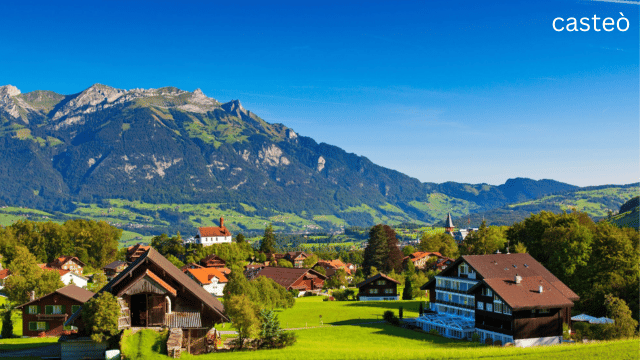Introduction
casteò systems have shaped societies for centuries. Influencing to social structures to religious practices and to economic opportunities. Originating to from ancient times. These systems have to evolved into the complex hierarchies that continue to impact millions worldwide. This article explores the origins types controversies and modern-day implications of the caste systems globally.
Introduction to casteò
What is Caste? casteò refers to a hereditary social class system prevalent in many societies. Dzetermining a person’s social status. Occupation and opportunities based on birth.
Brief Historical Context The concept of caste dates back to ancient India and has to since been observed in the various. That forms across different cultures and regions.
Origins of casteò System
Early Beginnings Early casteò systems emerged as a way to organize to communities and allocate to societal. Roles to based on professions and skills.
Evolution over Centuries Over time. Caste systems became more rigid incorporating social economic and religious. Elements into their hierarchical structures.
Types of Caste Systems
Major Caste Systems Worldwide Various regions including India Nepal Japan and parts of Africa. Have to developed distinct caste systems with unique characteristics.
Comparison of Different Systems While similarities exist. Differences in hierarchy mobility and societal integration vary significantly among different caste systems.
Social Structure and casteò
Impact on Society casteò dictates social interactions. Marriage alliances and community norms, influencing every aspect of daily life for those within its bounds.
Hierarchy and Roles Each caste is assigned specific roles and responsibilities. Perpetuating to social order and stability within communities.
Caste in Religion
Influence of Caste on Religious Practices Many religions incorporate caste into their rituals and beliefs. Reinforcing its significance in the spiritual and cultural contexts.
Role in Spiritual and Cultural Traditions Caste often determines one’s access to religious ceremonies. Temples and leadership roles within religious institutions.
Controversies Surrounding Caste
Modern Perspectives In contemporary society. That caste to systems face to scrutiny for perpetuating inequality and restricting social mobility.
Challenges and Debates Debates center around caste-based discrimination. Affirmative action policies and the ethical implications of caste hierarchy.
Legal and Political Aspects
Caste-Based Legislation Several countries have enacted laws to address. That caste-based discrimination and promote Equality in education. Employment and public services.
Political Movements and Reforms Political movements advocate for caste reforms. Seeking to the dismantle discriminatory practices and promote social justice.
Caste in Contemporary Context
Current Status Worldwide While some societies have moved towards greater equality, caste dynamics continue to influence social interactions and opportunities globally.
Changing Perceptions Public awareness and advocacy efforts contribute to shifting perceptions and attitudes towards caste-based discrimination.
Impact of Globalization on Caste

Effects of Global Interaction Globalization has exposed caste issues to international scrutiny. Prompting discussions on human rights and social justice.
Shifts in casteò Dynamics Increased mobility and access to education have challenged traditional to casteò boundaries. Leading to the societal changes in some regions.
Educational and Economic Factors
Access to Education casteò often determines access to quality education. Impacting long-term economic prospects and social mobility for individuals.
Caste and Economic Opportunities Professions and economic opportunities are often restricted or expanded based on one’s caste. Perpetuating to disparities in wealth and income.
Social Justice and casteò
Efforts Towards Equality Social justice movements aim to eliminate caste-based discrimination through advocacy. Legal reforms and to community of empowerment.
Social Movements and Activism Activists and organizations work to raise awareness. Empower to marginalized communities and the challenge to caste-based stereotypes.
Caste Discrimination
Examples and Case Studies Numerous examples highlight instances of caste discrimination in employment. Education and public into life across different countries.
Addressing Discrimination Initiatives focus on legal protections. Educational initiatives and public awareness campaigns to combat caste-based discrimination.
Future Outlook
Trends and Predictions The future of caste systems remains uncertain. With ongoing debates and the reforms shaping to the trajectory of social equality worldwide.
Potential Changes Global initiatives and societal shifts hold the potential to reshape caste dynamics and promote inclusivity in diverse communities.
Conclusion
In conclusion, caste systems have left an indelible mark on societies globally. That influencing social structures economic opportunities and cultural traditions. While efforts towards equality to continue. The complexities of the caste dynamics require ongoing. Dialogue and concerted action to the achieve meaningful change.
FAQs about Caste
FAQ 1: What are the major caste systems in the world? Major caste systems include the Indian caste system. The Japanese Burakumin system and various systems in the Africa and of the Nepal.
FAQ 2: How does caste affect social mobility? Caste often restricts social mobility by limiting access to education. Professions and social opportunities based on birth.
FAQ 3: Is caste system only prevalent in certain religions? While historically linked with Hinduism caste systems. Have been to observed in other religions and cultural contexts
- How does Casteò balance tradition and progress?
- Strategies for balancing tradition and progress include educational reforms. Legal frameworks and social initiatives to promoting inclusivity and equality. These efforts aim to harmonize tradition with modern advancements.
- Why does Casteò persist despite modernity?
- Casteò persists due to cultural. Religious and to social factors that reinforce caste-based identities and practices. Its resilience highlights the deep-rooted to nature of caste and the resistance to change.
- What is the future of Casteò?
- The future of Casteò depends on collective choices regarding identity equality and justice. It stands at a crossroads where its role. Will either continue to shape of societies or diminish as a relic of the past.
